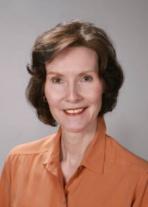“Reporting on Research: Standards Improve Better Communication”
Presented by Nancy A. Peters, CG®, CGL℠
Reviewed by Jill Morelli, CG®
NOTE: This post is the first of a series reviewing the BCG Skillbuilding lectures presented at the National Genealogical Society's 2019 Family History Conference held in St. Charles, Missouri from 08-11 May, 2019. Recordings of these lectures and the accompanying session handout can be purchased from PlaybackNow NGS at https://www.playbackngs.com/
 “Reporting on Research: Standards Improve Better Communication” by Nancy A. Peters did an admirable job of linking the standards in Genealogy Standards to writing research reports, whether for ourselves, a client, or applying for certification.
“Reporting on Research: Standards Improve Better Communication” by Nancy A. Peters did an admirable job of linking the standards in Genealogy Standards to writing research reports, whether for ourselves, a client, or applying for certification.
Quoting sections of Genealogy Standards and tying them with narrative and examples made them understandable and illustrated putting them into practice. Ms. Peters was clear in stating that the standards do not dictate a specific format. Her examples illustrated only one.
Following are some of my “take-aways,” which I didn’t know or needed a refresher.
• Not every report we write is a research report. It must be a detailed account of an investigation that attempts to answer a focused research question. It is not a biographical sketch, a case study, a database report, a family history compilation, a family tree, or a genealogical lineage or pedigree.
• We write research reports to preserve our work, to share with others, and communicate our findings. By applying standards, we can be more assured of accuracy and correct results.
• Use of the Genealogical Proof Standard (GPS) doesn’t guarantee a successful outcome. Unless all five elements of the GPS are incorporated in our research the chances of our conclusion being overturned rises. One exception is that there may be no conflicting evidence and if so, this element doesn’t apply. If all have been met then the result becomes a proven conclusion.
• Speculation does not serve us or our audience. If we have not met the GPS, we may have a theory. A theory is different than a hypothesis which is a tentative answer to the research question.
• Sometimes our research reports cannot reach a conclusion. Perhaps reasonably exhaustive research cannot be accomplished within the time limit or other constraints imposed by a client. In that case, Ms. Peters advises we “say it,” explain why, describe the progress made, and any recommended next steps. She advises us to be very specific about those next steps by including specific sources and repositories. This forms the basis for creating a new research plan.
She also covered differences between negative findings and negative evidence, the range of confidence in a specific conclusion, an outline for a research report, and how to handle page separation issues and attached images. The comprehensive syllabus has a long list of pertinent resources and also covers the contents of a research report.
Ms. Peters concluded with the reasons why we follow the standards:
1. Improves clarity,
2. Improves our effectiveness, and
3. Increases our confidence in the conclusion.
Ms. Peters style of presentation is “matter-of-fact” with references throughout to pertinent sections of Genealogy Standards. She speaks clearly and is easily understood, even though the subject matter may be dense. This presentation is suitable for all family historians, especially those who are considering certification, or are strong auditory learners.
Thanks, Nancy Peters, for a comprehensive look at the standards for research reports and more!
The words Certified Genealogist and letters CG are registered certification marks, and the designations CGL and Certified Genealogical Lecturer are service marks of the Board for Certification of Genealogists®, used under license by board certificants after periodic evaluation.